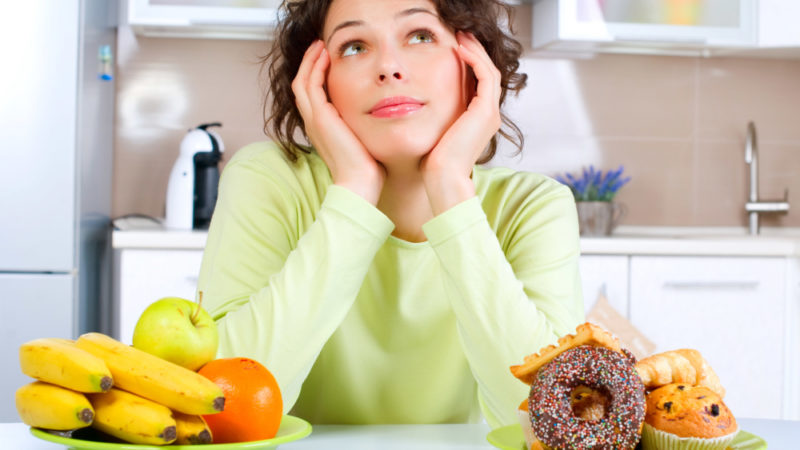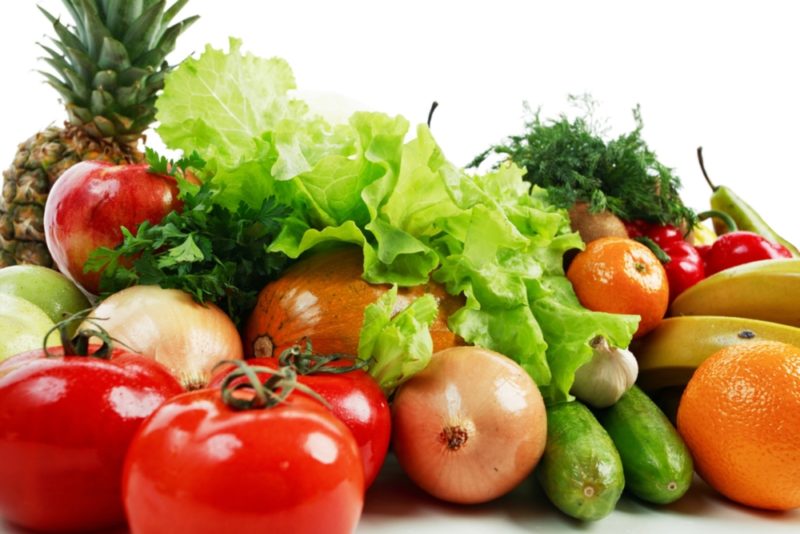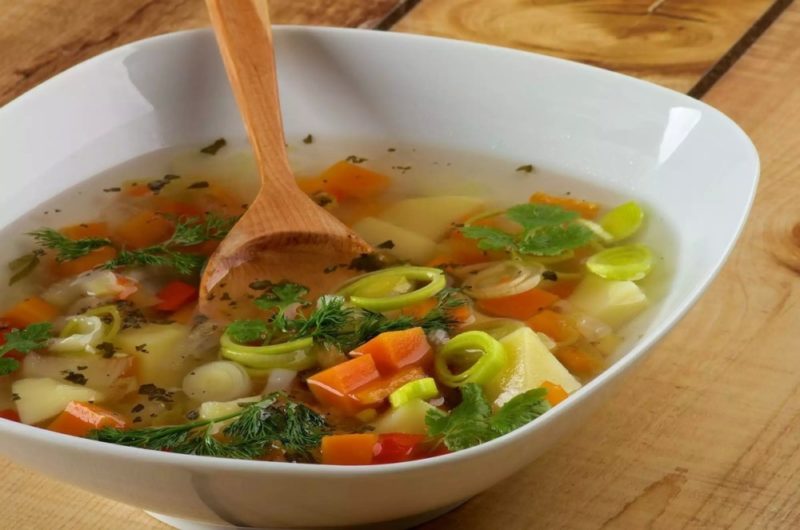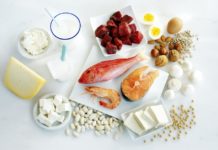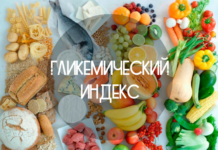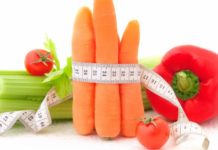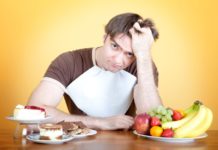A diet for pyelonephritis is one of the most important conditions for fighting the disease. The correct diet, called Table No. 7, allows you to quickly relieve inflammation, and during remission, you can feel healthy and alert.
Material Content:
Nutrition rules for pyelonephritis
The main objective of Table No. 7 is to maintain the water-salt balance in the body, which is disturbed due to improper functioning of the kidneys. The menu is designed so that the load on the urinary system is minimal.
Therefore, there are several important principles:
- Salt intake must be reduced to zero. The permissible amount is not more than 2 - 5 g per day. And for people suffering from hypertension, it is advisable to completely abandon the salt or reduce its amount in food to 2 g per day.
- For a day you need to drink at least 2 - 3 liters of liquid, including drinks and first courses.
- It is necessary to completely abandon fried foods. It is best to steam, it is also allowed boiled and stewed without oil products.
- Eat at least 4-6 times a day, but a little bit.
It is recommended to drink often, but in small doses, so that the kidneys are constantly washed, but do not experience stress due to the large amount of work.
Allowed and Prohibited Products
A diet for kidney disease involves the rejection of certain types of food.
The ban includes:
- spicy, salty or spicy products, including dishes prepared by pickling or pickling;
- instant food;
- all types of broths, including mushroom and fish;
- meat of fatty varieties (pork, goose, lamb, etc.);
- sausages, even those considered dietary;
- smoked products;
- without exception, all canned goods, both meat and vegetable or fish;
- fatty fish (salmon, tuna, herring, mackerel, cod, flounder, etc.);
- cheese of all sorts;
- shop sauces and ketchups;
- bean products;
- mushrooms.
From plant foods, radishes, bitter vegetables such as radishes, onions and garlic, greens with a high acid content (sorrel, spinach) are banned.
Among the contraindicated drinks are natural coffee, especially strong, carbonated (and even just mineral) water, cocoa and, of course, alcohol.
Despite the impressive list of prohibitions, you will not have to starve with this diet.
There are many products that are allowed and even useful:
- Meat of dietary varieties (beef, veal, chicken and turkey meat, rabbit meat).
- Low-fat fish, such as mullet, bream, blue whiting, pollock, saffron cod, etc. Cod is allowed, with the exception of a liver rich in omega fatty acids.
- Vegetables that do not hold water in the body: cucumbers, potatoes, zucchini, squash, tomatoes, etc. Pumpkin is very useful, and doctors advise eating not only pulp, but also seeds.
- Any fruits and berries, as well as dishes prepared on their basis - kissels, fruit drinks, jellies, etc. Help to quickly overcome the inflammation of watermelon and melon, accelerating the elimination of fluid from the kidneys.
- Products from yeast dough, but without salt: pancakes, homemade buns and muffins, pancakes, etc.
- Nutrition for chronic pyelonephritis must necessarily contain milk, but only skim. Products such as kefir with a fat content of 1%, sour cream, cottage cheese, whey, etc. are also useful.
- From cereals you can eat oat, buckwheat, pearl barley, as well as rice and corn. In addition, pasta is allowed in any quantity.
- Eggs are allowed, but in small quantities - no more than 1 - 2 per day.
- Of the drinks, the most useful are natural juices, berry fruit drinks, rosehip broth, herbal teas - for example, corn stigmas. Regular tea, black and green, is also on the list of permitted products. But coffee can be drunk only occasionally and only weak.
- For sweets, honey, jam, jam, fruit jelly and even sweets are allowed, with the exception of chocolate.
- In small quantities, butter can be added to food (20 - 30 g per day).
During remission, homemade sauces made from sour cream, tomatoes, etc. are allowed, but they should be cooked with a minimum salt and spices and with a small amount of vinegar.
Menu of the medical diet "Table No. 7"
The therapeutic diet according to Pevzner allows you to create a menu in such a way as to fully satisfy the body's needs for the necessary trace elements.
For breakfast you can cook:
- buckwheat or oatmeal porridge in water, with the addition of butter;
- a fresh vegetable salad;
- milk soup (for example, with rice or noodles);
- whipped protein omelet;
- as drinks - compote or fresh fruit, tea with milk, liquid berry jelly.
2 to 3 hours after the first meal, you need another light breakfast.
Ideal would be one of the following options:
- Fresh fruits and a glass of yogurt.
- Green tea with biscuit cookies.
- Fresh apple and compote.
- Dried apricots (3 - 4 pcs.) And rosehip broth.
Lunch should be tight, for example:
- Potato soup, on the second - a fishcake and vegetables cooked in a double boiler.
- Vegetarian borsch and low-fat pilaf with rabbit meat.
- Pumpkin puree soup, rice porridge and a piece of boiled chicken.
An afternoon snack should be made easy:
- Diet fruit salad with green tea.
- 150 - 200 g of watermelon. Other fruits are suitable - melons, apples, etc.
- Berry or fruit fresh.
Dinner Options:
- Cottage cheese casserole and a glass of low-fat kefir.
- Vegetable salad and a slice of boiled or steamed meat.
- Rice with stewed vegetables.
- As drinks, a decoction of herbs or rose hips, berry jelly, compote are suitable. It is better to refuse tea at night.
For women
Medical diet number 7 is universal. However, for women, it can be a good way to declare the fight for extra pounds in parallel with the treatment of pyelonephritis.
To do this, you must:
- reduce sugar intake;
- do not eat later than 3 to 4 hours before going to bed;
- remove pasta from the diet, replacing them with buckwheat, rice or pearl barley.
For men
Most adults of the stronger sex can hardly tolerate low levels of animal protein in food. You can cope with the problem by diversifying the diet with several types of meat and seafood. For example, fish steaks as breakfast, buckwheat porridge and boiled beef for lunch, scrambled eggs with shrimp for dinner, etc.
For children
The medical diet for babies is not too different from the standard rules of nutrition. However, it must be remembered that the children's body requires not only energy, but also “building material”, which ensures full development. And this means that in the diet must be present fermented milk products in large quantities, eggs, fresh fruits.
In order for the baby not to lack glucose, you can cook delicious sweets with your own hands: for example, bake apples with honey, make fruit salads, jelly, etc.
Watermelons, melons, cucumbers and other products with a diuretic effect are very useful for children.
The volume of water and drinks should be at least 1.5 liters per day.
In the acute stage
Depending on the form of the disease, there are 3 subspecies of the medical diet: Table number 7a, 7b and 7c.
The first is prescribed for the acute form of the disease in order to relieve the attack as soon as possible.
Its main principles:
- A large amount of water and other drinks (up to 3 liters per day).
- The complete lack of salt.
- The exclusion of all protein products (including meat, eggs, etc.).
- The diet these days consists of vegetables and fruits, both raw and boiled.
- Vegetables causing bloating are not allowed (cabbage of all sorts, corn, etc.).
- As drinks, berry fruit drinks, compotes, juices will be optimal. You can also drink sweet weak tea with the addition of milk or lemon.
After 10 days, you can switch to a vegetable-milk diet: fermented milk products are added to the diet in large quantities, with the exception of cottage cheese.
When the disease enters the remission stage, you can gradually start to include lean meat, eggs, dietary fish and cottage cheese. During this period, it is already allowed to add a small amount of salt to food (no more than 2 - 5 g per day).
Useful recipes
The opinion that the therapeutic diet according to Pevzner deprives the patient of all gastronomic joys is fundamentally wrong. From the allowed products you can cook a lot of delicious and satisfying dishes. Here are just a few interesting ideas.
Shrimp pasta and fresh herbs.
Products:
- pasta (dry) - 200 g;
- shrimp or squid meat - 200 g;
- greens (basil, dill, parsley, cilantro, green onions) - a small bunch;
- olive oil - 5 tbsp. l
Cooking:
- Grind the washed greens with a knife or in a blender. Pour olive oil in there.
- Boil pasta in unsalted water.
- Mix them in a deep pan with shrimp and herbs and simmer under the lid for about 5 minutes.
Tip: before mixing with pasta, seafood can be fried a little, but without oil. In this case, the products will not acquire any properties harmful to the urinary system.
Omelet with vegetables.
Products:
- chicken eggs - 5 pcs.;
- turnip onions - 2 - 3 large root crops;
- carrots - 1 pc.;
- milk - 300 ml.
If desired, you can take other vegetables, for example, zucchini, eggplant, potatoes, etc.
Cooking:
- Cut vegetables into small cubes. Having laid them in boiling unsalted water, boil until half cooked.
- In a deep bowl, beat the eggs with milk.
- Combine the boiled vegetables and the egg-milk mixture together and, having mixed, pour into the baking dish.
- Put in a hot oven for 10 minutes.
A delicious and satisfying omelet is ready!
Lean vegetable soup.
Ingredients:
- zucchini - 1 pc. small size;
- carrots - 1 pc.;
- tomato - 1 - 2 medium-sized fruits;
- potatoes - 3 pcs.
Cooking diet soup is even simpler than usual:
- Cut all the vegetables into small cubes, put them in a saucepan and pour in cold water so that it completely covers the vegetables.
- Boil the soup on low heat for about 17 to 20 minutes.
- Shortly before finishing add some spices to your liking.
Despite the simplicity of preparation, the taste of this dish is very pleasant, and most importantly, it can be eaten even during an exacerbation of the disease.
Cold oatmeal in milk.
This dish is ideal for breakfast, as well as for a working lunch or late dinner.
To prepare it, you need:
- milk - half a glass;
- oatmeal (preferably instant cooking) - 2 tbsp. l .;
- sugar - 1 tbsp. l .;
- any fruits or berries - 1 - 2 tbsp. l in cut form.
1 serving requires half a peach or banana, 3-4 grapes, several cloves of mandarin or orange.
Cooking:
- Pour sugar and cereal into a tight-fitting jar of 250 ml or more.
- Pour the same milk there.
- Cut the fruit into cubes about 1 cm in size.
- Put them in a jar of the remaining ingredients, mix gently and refrigerate for 12 hours.
A delicious diet dish is ready! It does not require heating and perfectly satisfies hunger. By the way, you can cook in small airtight containers and take such porridge for work - this will solve the problem of refusing fast food.
Important Tips
Diet number 7 is not only a restriction in food, but also a special way of life. Adhering to the diet is necessary not only during the period of exacerbation.
Fasting or food restrictions that cause severe discomfort should not be allowed.
The hardest thing to deal with is the lack of salt.
Some tricks will help here:
- Use a small amount of spices when cooking: coriander, marjoram, basil, black pepper, etc.
- Salt can be replaced with dried seaweed, which is sold in a pharmacy.
- Combine the allowed foods so that they emphasize each other's taste and hide the lack of salt. For example, boiled potatoes are delicious with sour cream. Porridge can be cooked in milk with added sugar. And some food does not require salting at all - for example, meat, fish and eggs, vegetables.
Remember that pyelonephritis is not cured forever. To avoid exacerbation, once a week it is necessary to arrange for the body to unload, excluding proteins and fats from the diet and increasing the volume of vegetables and fruits.



